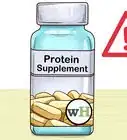This article was co-authored by Laura Flinn. Laura Flinn is a National Academy of Sports Medicine (NASM) Certified Personal Trainer, USA Olympic Weightlifting Sports Performance Coach and Certified Fitness Nutritionist, with an additional qualification as a TRX Suspension Trainer. Laura runs her own personal training program based in the San Francisco Bay Area and specializes in topics such as weight loss, muscle growth, cardiovascular training, and strength training.
There are 15 references cited in this article, which can be found at the bottom of the page.
wikiHow marks an article as reader-approved once it receives enough positive feedback. This article received 13 testimonials and 94% of readers who voted found it helpful, earning it our reader-approved status.
This article has been viewed 277,644 times.
It takes more than big muscles to become a bodybuilder. If you've got an interest in fitness and muscle growth, you can learn to get started training and eating right to build your muscles in a targeted and organized way, as well as how to crack into the competitive world of professional bodybuilding.
Steps
Getting Started
-
1Find a good gym. You can get started getting into shape and building muscle at home, with a basic home gym set up, but without access to professional gym facilities, it's not possible to become a bodybuilder of the sort that adorns the cover of Muscle & Fitness. If you want to become a competitive bodybuilder, it's important that you find a good gym in your area where you can train. Some noteworthy bodybuilding gyms include:
- Gold's Gym in Venice, CA
- Original Temple Gym in Birmingham, UK
- Bev Francis's Powerhouse Gym in Syosset, NY
- Metroflex in Arlington, TX
- Oxygen Gym in Kuwait
-
2Familiarize yourself with important muscle groups and basic anatomy. Bodybuilders are part athletes and part artists. Like a sculptor uses clay or marble, a bodybuilder uses sweat and determination to train the muscles and sculpt the body into a particular physique. Planning what you want to get out of bodybuilding, how you want to shape your body, is a big part of the process. Get the following textbooks to do your research on the body:
- Grey's Anatomy
- Encyclopedia of Modern Bodybuilding by Arnold Schwarzenegger
- Bodybuilding: A Scientific Approach
Advertisement -
3Prioritize your goals. If you want to become a bodybuilder, it's going to take some planning when you get started, depending on where you are with your body. Planning and sculpting will be an ongoing process, so it's good to sit down and meet with other bodybuilders and trainers to talk about what parts of your physique to work on.
- If you're a little overweight, in the beginning you need to get focused on doing calorie-burning exercises to get your fat percentages down, way before you start worrying about building your pecs into chiseled works of art. Start doing cardio and circuit-training exercises to lose weight.
- If you're already lean and want to start building up muscle, start developing your strength training routine, focusing on compound movements first, then working your way up to isolation exercises, targeting the specific muscle groups you've identified as needing work.
-
4Learn proper form for each exercise. It's very important to learn to lift properly, trying the different exercises you'll do in your workout with an empty bar, then moving on to the weighted barbell to make sure you're got the fundamental movements down.[1]
- Consider consulting a personal trainer for guidance, at least when you're first starting out. It's very possible and in fact probable that you'll train wrong if you train without guidance, which can result not only in injury, but a huge waste of time and effort.
- It's important to go to a gym to learn from other bodybuilders as well. Join the community and learn from more experienced lifters about how to do the workouts properly.
-
5Consult a nutritionist. Everyone has a different metabolism and will require slightly different supplementary nutrition for building muscle. It's a good idea to meet at least once with a nutritionist or other health counselor to build a diet plan specifically tailored to your body and what you want to do with it. It's impossible to give a single, generalized diet plan that will work for everyone, so you'll need one specific to your needs.[2]
-
6Figure out how to pay the bills. Bodybuilders don't make lots of money, so the idea of becoming a professional bodybuilder is a lot like the idea of become a professional poet or professional painter: it'll take a lot of your heart and soul, but you'll also need to figure out how to take care of the practical details. You've got to support your bodybuilding with some other kind of work to pay the bills.[3]
- Consider becoming a licensed personal trainer, if you're a gym rat. This will allow you lots of free gym time, and you'll even be getting paid to talk weights and training with others. Win-win for an aspiring bodybuilder.
- Bodybuilders often have an easy time getting jobs for which some bulk helps. Consider looking into being a bouncer, a security guard, a mover, or working in a warehouse.
-
7Prepare for the long haul. It's important to know that you're not going to start doing deadlifts one day and wake up the next day bulked up like the Hulkster. Bodybuilding takes a long time for you to see the kind of results you're hoping for, but with the proper time and dedication, you will start seeing those results. This isn't a field for weekenders who love action movies, it's a 24-7 lifestyle. Think you got what it takes? Get training.
Training
-
1Develop your strength training routine. The exercises you perform will depend on your goals for your body and your stage in the training process. It's generally suggested, though, that you stick to the same major compound movements that most bodybuilders use, making this the cornerstone of your strength training. Later you can incorporate isolation exercises and machines into your routine, but right now you should be focused on leaning up and gaining muscle, doing the following exercises:[4]
- Squats
- Deadlifts
- Standing overhead press
- Bench press
- Pull-ups
- Dips
- Rows
-
2Start with moderately heavy weights. Picking the right amount of weight to lift is important to build the right kind of muscle and avoid injuries. First, you need to determine your max-out weight: the heaviest weight that you can lift, at least once. Use a spotter and find out your max. Ideally, beginner bodybuilders should be lifting 70-80 % of that single rep max for 6-10 repetitions of 3-4 sets. This is the optimal set and repetition range for muscle growth.[5]
- When you plateau, it's important to still stick to 1-5 reps of heavy weight (85-90% 1RM), occasionally interspersed throughout your weekly schedule. Don't push it too much too fast, or you risk injury.
- Use progressive resistance. Once you progress to a point where the weight you're using seems light at the end of the 10th rep, it's important to increase the weight gradually to avoid plateauing too hard.
-
3Work past plateaus. All bodybuilders will come up against the plateau, the point at which you stop noticing the rapid results you were noticing weeks or even days earlier. Learning to diagnose and correct these plateaus will help to keep you safe from injury as well as to keeping moving toward the results you want.[6]
- If you want a muscle group to bulk, you need to increase the weight you're training and decrease the reps.
- If you want a muscle group to tone out, you need to decrease the weight and increase the reps.
-
4Target particular muscle groups on particular days. Typically, serious bodybuilders will isolate muscle groups to train on particular days in the week. You might have one day that you just train legs and abs, then the next day you'll train pecs and arms, then the next day you'll do shoulders and back, and then you'll do an ab shredder workout. Your last training day can be cardio, and then give yourself two days off to recover.
- Bodybuilders should be doing about 6-10 sets per body part, per week, consisting of 6-10 reps for compound lift and 8-15 reps for isolation movements, working particular muscles.
- Use a regimen that works for you. There's no single way to organize your weekly workout schedule, but it helps a lot of people to keep it fairly consistent.
- Note that it's okay to start with full-body routines if you're a complete beginner. Compound movements (which engage many different muscle groups) will require you to rest every other day, but they can be a good way to quickly and evenly improve overall body strength. When you're happy with your overall body strength, targeting certain muscle groups becomes more important.[7]
-
5Do calorie burning cardio, as well. Lots of bodybuilders think that doing cardio "kills gains," which is partially true, but it's also necessary to get your body-fat percentage down as much as possible when you're first getting started. Bodybuilders need to balance cardio and building large muscles, which can be a challenge.[8]
- Cardio won't make your muscles smaller, but it will make them grow slower. However, nobody will be able to see those rock-hard abs if you don't burn the fat off the top of them first. Shred the fat, then build the muscles up.
- Try interval training, doing 30 seconds of sprints at 10 miles (16 kilometer) per hour, then 30 seconds of 5 miles per hour jogging. Do this for at least 5 minutes, up to as long as you can take.
- Do cardio after you do your work out and do workouts for the whole time that you're doing cardio. Stop the cardio when you feel you're thin enough and you can feel your arm muscles without a layer of fat.
-
6Let muscles rest and recover before the next workout. It's absolutely critical to incorporate recovery time into your workouts as well. You cannot just train constantly and think you'll build muscle faster that way. That's the way to injure yourself. You need to have at least two days every week, during which you don't train at all.[9]
- For a lot of bodybuilders, that's the day you can do other stuff: tan, go on dates, do your laundry. Use those days to get other stuff done so you can focus more on training during the days you're training, helping you stay focused.
Eating Right
-
1Calorie load the right way. Nutrition is one of the biggest and most important facets of bodybuilding. You can lift seven days a week, train hard, and do all the cardio in the world, but if your nutrition is poor, you will not see rapid and mass gains in muscle size and strength. Learn to eat the right amount of the right kind of calories to gain muscle the way you want.[10]
- To workout the daily calories you need for mass muscle gain, multiply your body weight in pounds by 20 for a rough estimate of what you'll need each day you train.
-
2Eat plenty of lean proteins. Protein helps to build muscle quickly, and you need to have it present in high quantities in your diet, if you want to become a bodybuilder. Multiply your body weight in pounds by 0.8 to find out how many grams of protein you should consume in a day. Your daily protein intake should be around 20-35% of your calories.[11]
- Lean chicken, beef, eggs, and legumes should make up a significant portion of your diet.
- Most bodybuilders are pretty sick of chicken breasts and broccoli after a couple months, so it's a good idea to invest in a cookbook to help you keep things interesting. Food is fuel. Treat it like business.
-
3Eat slow-digesting carbohydrates. Carbohydrates are vital for maintaining muscle glycogen stores which elicit maximum training energy, and should make up around 60% of your daily calorie intake. Carbohydrates stimulate insulin release, which is a powerful agent for tissue growth.[12]
- Eat the majority of your carbs on workout days, especially post-workout. It is an excellent way to promote lean mass gains and minimise unwanted fat. You should also have a whole food meal with both carbs and protein 1.5 hours after your workout.
- Simple carbs such as rice, pasta, bananas, and whole grain cereals are excellent during this period. They deliver a rapid insulin spike and maximise muscle anabolism.
- Limit carbs to small servings of low GI carbs such as oats or a piece of fruit at other times of the day to control blood sugar levels and support lean gains
-
4Consider supplementing with whey proteins. Protein supplements such as whey powders are common among bodybuilders and benefit a wide variety of lifters, especially if you struggle to get your daily amount of protein.[13]
- Protein supplements are most effective within 30 minutes after a workout, so that the muscles can rapidly recover and therefore grow. Other times to work a protein shake into your diet can include around an hour before you workout, which can help to stimulate protein synthesis.
- It is advised you should take no more than 3 servings of protein supplement within a day, otherwise you are wasting your protein supplement, to avoid ingesting excess protein.
-
5Use healthy fat to boost testosterone. Healthy fats are an essential component of a hardcore mass gain plan and a healthy diet. Healthy fats include nuts, olive oil, avocados, butter and eggs, which support the production of testosterone, will help you gain and recover faster.[14]
- On days that you let your muscles rest and don't work out, it is beneficial to cycle your carbs and fats. Increase fats on rest days and limit carbs because you are not training so you don't need the energy from carbs to perform.
- Avoid trans-fats and other fattening foods laced with preservatives. Fried foods, cheeses, and anything containing high fructose corn syrup should be avoided during training.
-
6Stay well hydrated. Bodybuilders usually carry around gallon jugs full of water for a reason: you have to stay extremely well hydrated to get in shape. During workouts, you need to be drinking at least 10 ounces of water for every 10-20 minutes that you workout.[15]
- Avoid sugary sports drinks and other fluids during your workouts. Just stick to water. After workouts, you can have some coconut water to replenish your electrolytes, or use some electrolyte tablets in your own water, making homemade sports drink.
- Eat bananas and dates after workouts to help replenish electrolyte levels, keeping your potassium levels high and your recovery mild.
Working on Your Look
-
1Start posing after your workouts. The best time to pose and admire your artwork? Immediately after you work out your muscles. When you're feeling jacked and pumped up, it's because your muscles are full of blood. It's the best time to see your progress and appreciate the gains you're making, as well as practicing your poses.
- Practice full-body flexes, trying to keep every muscle tense at the same time, even if you're mostly bouncing your pecs. It's a workout in itself.
-
2Identify specific muscles you hope to build. As you're posing, it's a good opportunity to check out your symmetry, your good gains, and identify places that you need to isolate or work out more vigorously for next week's training sessions. What needs to be smoothed out? What needs to be bulked up? What exercises will you need to do to get the results you want?
- It's usually a good idea to solicit feedback from other trainers and bodybuilders at the gym. A lot of the bodybuilding culture will happen at this stage, posing in the weight room and asking others what you need to train.
-
3Get the right gear. While it's probably not the most important thing, if you're trying to be a bodybuilder, you might as well get some clothes and gear that will help to emphasize how jacked up you're getting. Purchase some good posing trunks, tight-fitting muscle shirts, and a good training belt to help keep you secure during your workouts. Weight-lifting gloves are also common.
-
4Shave or wax all your body hair regularly. It's the part that's maybe the most awkward to talk about, but bodybuilders like to keep anything out of the way of those bulging muscles. That means scheduling regular body-waxing, especially before contests. You don't need to do it all the time, but you want to keep up the temple, it's usually common to shave your body a few times a month to keep things under control, then get full a full wax before you perform.
-
5Get an even tan. If you have pale skin, it's harder to see your muscles, simply put. Bronzing helps to create a bigger contrast, creating shadows where you muscles are popping. It's just easier and more aesthetic to see your muscles if your skin is a little darker. For that reason, you need to safely tan yourself on a regular basis to make sure your muscles are looking their best.
- Don't forget under the arms. White armpits are a classic novice mistake.
Going Pro
-
1Start entering regional contests. Open regional bodybuilding contests are the way to crack into the world of competing. Everyone starts at the local level and gradually builds their way up to the national level. If you're in good shape and want to get experience, try competing and see if you've got what it takes to move on to the next level of competition, and maybe even go pro. For a list of amateur competitions in the United States, click here.
-
2Register with the IFBB to compete at the national level. The International Federation of Bodybuilding and Fitness (IFBB) governs all national and international bodybuilding competitions, including the Arnold Classic, Mr. Olympia, and a variety of regional championships. If you want to become a pro and compete at the national level, you need to register with the IFBB and compete.[16]
-
3Keep training. The world of competitive bodybuilding can get hectic, star-studded, and strange, but there's one constant at the center of it: you at the gym, clanging and banging. You must continue to find the time and make the effort to keep building that body and maintaining the sculpture that you're creating.[17]
-
4Attract sponsors to go pro. The more competitions you win and the more your physique starts to speak for itself, you'll need to start attracting sponsors, essentially going pro. This means that you'll be able to make money to train full time, without having to worry (at least as much) about doing other things to fund your bodybuilding. This is the dream that every bodybuilder works toward, and it'll only be available to a select few, with the genetics and the effort to make their bodies into Olympia-level physiques. Keep working toward this.
-
5Diversify your skill-set. The bodybuilders who really take it to the net level–we're talking your Arnolds, Lou Ferrignos, Jay Cutlers, Ronnie Colemans–are not only super-cut, but super-talented in other arenas. Having the charisma and diverse talents to do other things will help you to stand out, as well as make you more marketable for sponsors.
- Consider taking acting classes, competing in strong-man competitions, or even something like pro wrestling or sports entertainment, all fields that will value your unique size and abilities.
Expert Q&A
Did you know you can get expert answers for this article?
Unlock expert answers by supporting wikiHow
-
QuestionHow long does it take to become a bodybuilder?
 Laura FlinnLaura Flinn is a National Academy of Sports Medicine (NASM) Certified Personal Trainer, USA Olympic Weightlifting Sports Performance Coach and Certified Fitness Nutritionist, with an additional qualification as a TRX Suspension Trainer. Laura runs her own personal training program based in the San Francisco Bay Area and specializes in topics such as weight loss, muscle growth, cardiovascular training, and strength training.
Laura FlinnLaura Flinn is a National Academy of Sports Medicine (NASM) Certified Personal Trainer, USA Olympic Weightlifting Sports Performance Coach and Certified Fitness Nutritionist, with an additional qualification as a TRX Suspension Trainer. Laura runs her own personal training program based in the San Francisco Bay Area and specializes in topics such as weight loss, muscle growth, cardiovascular training, and strength training.
USA Olympic Weightlifting Sports Performance Coach
-
QuestionHow do I lose my stomach fat?
 Community AnswerThere is no such thing as spot deduction, which means losing fat in one particular part of the body. You can lose fat overall by exercising regularly and eating a healthy, well-balanced diet.
Community AnswerThere is no such thing as spot deduction, which means losing fat in one particular part of the body. You can lose fat overall by exercising regularly and eating a healthy, well-balanced diet. -
QuestionCan a 54 year old become a bodybuilder?
 Community AnswerOf course! Just remember to stretch and warmup to prevent injuries and keep a positive and determined attitude!
Community AnswerOf course! Just remember to stretch and warmup to prevent injuries and keep a positive and determined attitude!
References
- ↑ https://www.seattletimes.com/seattle-news/health/perform-exercises-correctly-to-prevent-injury-and-gain-benefits/
- ↑ https://www.sportsdietitians.com.au/factsheets/food-for-your-sport/bodybuilding/
- ↑ https://careertrend.com/info-8754092-much-pro-bodybuilders-make-year.html
- ↑ https://www.bowflex.com/blog/bodybuilding-for-beginners.html
- ↑ https://www.mayoclinic.org/healthy-lifestyle/fitness/in-depth/exercise-intensity/art-20046887
- ↑ https://www.bodybuilding.com/content/7-ways-to-bust-any-plateau.html
- ↑ https://vitals.lifehacker.com/should-i-do-full-body-workouts-or-work-one-muscle-grou-1785371687
- ↑ https://www.bodybuilding.com/content/fat-loss-training-wars.html
- ↑ https://www.bodybuilding.com/content/rest-and-overtraining-what-does-this-mean-to-bodybuilders.html
- ↑ https://www.liveabout.com/bodybuilding-nutrition-basics-415441
- ↑ https://www.liveabout.com/bodybuilding-nutrition-basics-415441
- ↑ https://www.liveabout.com/bodybuilding-nutrition-basics-415441
- ↑ https://www.bodybuilding.com/content/your-expert-guide-to-whey-protein.html
- ↑ https://www.webmd.com/diet/ss/slideshow-healthy-fat-foods
- ↑ https://www.webmd.com/fitness-exercise/features/water-for-exercise-fitness#2
- ↑ http://www.bodybuilding.com/fun/greatest-olympia-winner-of-all-time.htm
- ↑ http://www.ifbb.com
About This Article
Before you can become a bodybuilder, find a gym where you can train regularly. When you’re ready to get started, create a strength training schedule that focuses on leaning up and gaining muscle with major compound movements such as squats, overhead presses, and deadlifts. In addition to weight training, make sure to work in some cardio to burn fat. Finally, to bulk up plan to eat a lot of lean proteins and slow releasing carbs. For tips on how to go pro, keep reading!


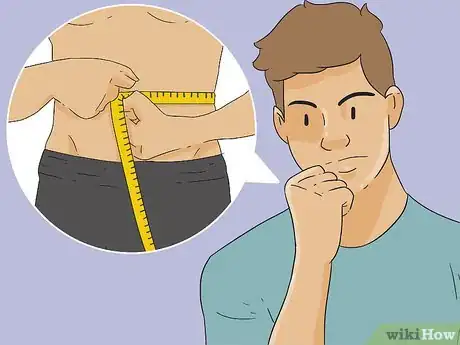
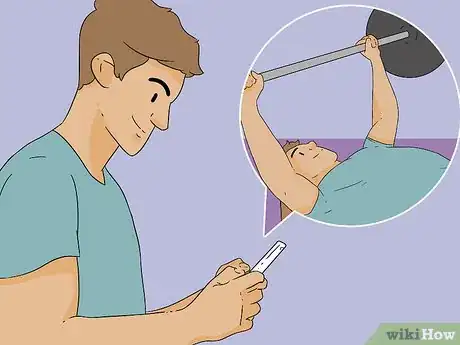




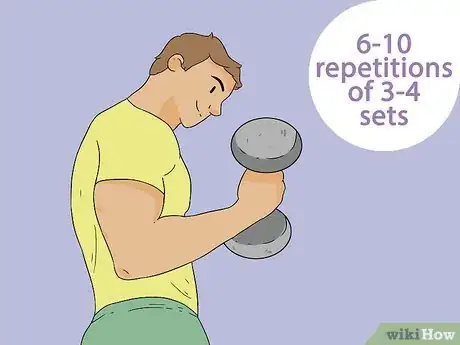

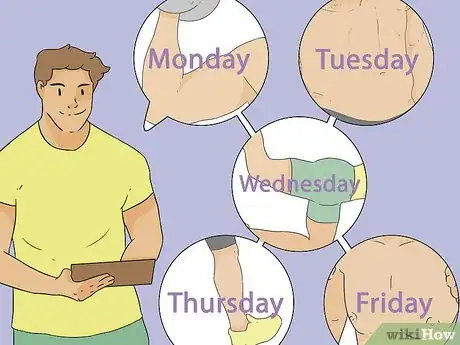




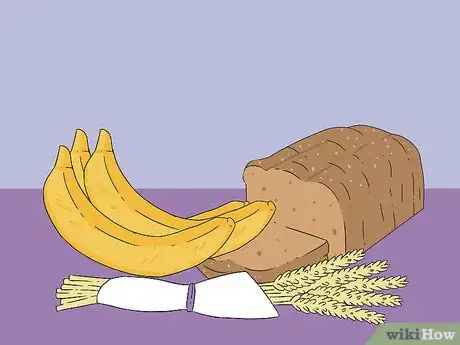
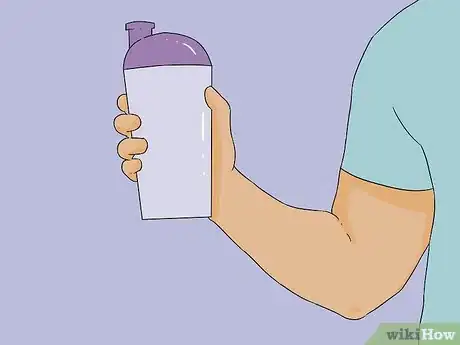





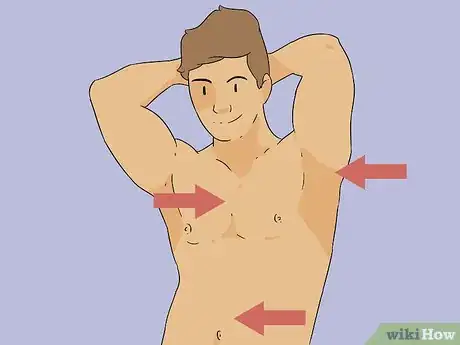


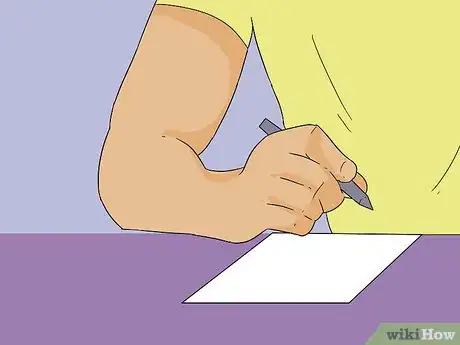




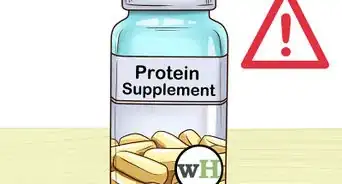
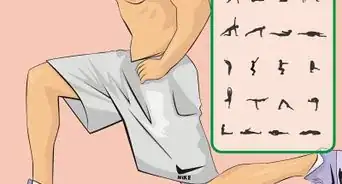

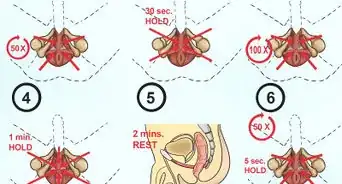

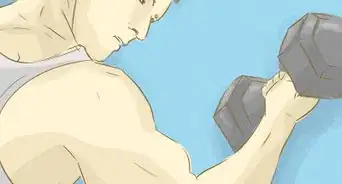
-Step-24.webp)















